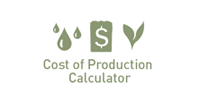Week 47 - May 2018
Eastern Market Indicator (EMI)
Eastern Market Indicator (EMI)
Microns
AWEX Auction Micron Price Guides
Sales held Wed 23rd May & Thu 24th May 2018
Offering (Aust. Only)
Offering (Aust. Only)
Sales Week 47: 25th May 2018
Currency Movements
Currency Movements
Sales Week 47: 25th May 2018
Forecast
Forecast
Scheduled Australian Wool Auction Sales
AWI Commentary
Another sensational and historic week at Australian wool auctions. Prices for all wool types and descriptions finer than 28-micron leapt forward once more as buyer’s purchasing intensity lifted despite some nervousness within the trade as to the potential regarding how high the market may go. The AWEX (Australian Wool Exchange) EMI (Eastern Market Indicator) gained 2% or 40ac clean/kg to close the week at 1983ac/clean kg, an all time record for both daily and week ending values of that indicator. Last year at the same period the EMI sat at 1495ac so we are now 32.6% higher year on year.
The EMI when expressed in USD (US Dollars) is also charting towards record territory as that indicator went to the 1500usc clean/kg mark after gaining 2.36% or 35usc for the sale series. This figure is in fact a better year on year improvement than the market in Australian dollars, as the US EMI last year, at the same period was 1122usc clean/kg. This is a 12 month gain of 378usc or 33.8%.
As we move further into what is traditionally a quieter time of the selling season, the overseas users are acutely aware of the supply issues that arise at this time. Lower volumes flow onto the market here in Australia as Winter sets in, but compounding the problem for processing mills is the other major source of Merino wool, South Africa, will shortly go into hibernation for two months. Their sales are not scheduled to resume until August, leaving Australia the only primary source for anyone interested in significant volumes of Merino wool for the duration of the South African break.
Chinese buying activity was once more front and centre, but this week was somewhat different as the largest indent buyer for that destination topped the buying lists. This normally means that mills and traders were unable to lock enough volume in from their trader exporter for their immediate and near-term requirements. This meant they had to issue buy orders (indent) to their sale room operator. Nearly all of their interest targeted Merino fleece wools of 18 to 22 micron, with the broader edge of that range the most sought.
In what is now a three-week long trend, Merino prices were extremely orderly in the way their prices rose and the three selling centres were remarkably similar in the closing price guides. This was not surprising given the current trend and the dominance of indent buyers, but still indicative of overseas interests being very aware of the price they need to pay to acquire inventory to place on machines. General daily gains of around 30ac were made, making up the week’s general gain of around 60ac. The good merino skirtings followed that pattern, but even the lower quality types edged 30ac higher. Cardings again moved more conservatively, but still posted prices that were 25ac higher by weeks end.
The extremely dry conditions across much of Australia continue una-bated, with just Western Victoria and much of Tasmania the only areas that have had some relief. While the wool quality is definitely lower it is surprising that length of fibre and the tensile strength is remaining in “good” readings, with most wool managing to test 90mm greasy and above 30nkt. With such tough conditions being experienced year long, this is testimony to the extraordinary resilience of the Merino animal and its ability to cope with the toughest of environments. Some would say just like their owners, who are now getting a very healthy financial return for their long-held faith in the breed.
Next week sees a similar volume to go to auction and its very difficult to see any change to the sentiment seen at auctions.
Wool forwards report - Southern Aurora Markets
Growers took advantage of the third straight week of strong rises in the spot auction to achieve unprecedented hedge levels into the spring and beyond. Processors and exporters, struggling to pass on the recent rises down the pipeline, stepped up and engaged with growers out to November 2019 on 19.0 microns. The forward price curve established this week looks present the market with a hedging base well above even recent historical levels. For the 19.0 grower spring levels of 2050 in September to 1980 in November 2018 and around 1900 for spring 2019 traded this week.
Interest from both sides was spread across the micron range trading from 17.0 to 23.0. The increasing trend seems to be for buyers to react to proactive grower selling out in the distant months. With risk at this level very high for the speculative seller. Buyers are looking for some degree of cover before engaging in medium to longer dated export sales to manage their margins which has been particularly challenging over the past 12 months. With quantities limited at auction again next week we anticipate forward levels will be maintained.
AUD Commentary - Southern Aurora Markets
The Australian Dollar did a little better this week, reversing the previous week’s downturn as it lifted from Monday’s open of .7516 to be trading Friday at .7582. Again most of the AUD strength was related to a softer USD arising from trade tensions with China and a fresh war of words with Nth Korea. Generally though it was a positive week with Global Equity markets rallying, and the Dow back through 25,000 level and the U.K FTSE hitting a new record high. Brent Crude Oil traded up through $80/barrel and the Commodity Currencies of Canada, NZ and Australia outperformed. During the week also Westpac released the “Leading Index Data” which rose indicating a further expansion of Australian economic activity showing a rise to +0.82 % in April from +0.77% in March. However Bill Evans, the Chief Economist at Westpac said the conditions required to justify an interest rate rise in Australia remain remote and the Bank forecasts that the RBA will be forced to leave the cash rate on hold for the remainder of 2018 and 2019.
Technically the Australian Dollar still remains range-bound, despite the bounce this week, after the Aussie’s strong rejection of last weeks low. It suggests that a fresh rally is likely if we break above .7612, but that rally will likely run into strong overhead resistance at .7688. The bigger picture still suggests the market will roll over and bring a fresh decline to test key support at .7411.












